Technology
RotorSwing Holland is continuously optimizing its own roll damping systems. In 2018, RotorSwing made great advancements on the ZeroSpeed version in terms of design and functionality. This newest ZeroSpeed version now provides roll damping from 0 to 25 knots. It also has made improvements on the patented RAKE function to minimize drag (only applied on the rotors). We will periodically update this section with new helpful information about our roll damping systems.
Roll Damping
Before ordering your RotorSwing roll damping system, our initial step is to accumulate the appropriate specifics from your vessel. We then can utilize our modern computer visualization and calculation programs to be able to advise you. The RotorSwing is placed nearly horizontally, resulting in far greater roll damping moments. There are two added side effects to this more horizontal installation:
1. There will be no steering effects
2. No Anchor crabbing!
We calculate the best installation location, angle and effectiveness because the installation placement is flexible and the dimensions required are relatively small. As inventors of the Magnus ZeroSpeed Rotors and with more than 20 years of experience, you can rely on our expertise in roller damping!
Until recently, RotorSwing roll damping systems were only installed onboard displacement vessels. However, with the improved ZeroSpeed version, which has the patented active RAKE system, these stabilizers are now also successfully being installed on faster GRP vessels. Once the sailing speed exceeds 10 knots, the rotors reduce their angles to minimize drag.
Horizontal installation prevents steering effects and maximizes roll-damping elevator forces. The ZeroSpeed version has an extended elbow to further increase lift forces.
Magnus Effect
As opposed to fin stabilizers, this roll damping system generates high lift forces starting at 3 knots. The RotorSwing is based on the Magnus effect. A rotating forward moving round or cylindrical object generates an upward or downward force. At lower boat speeds, rotors are the only powerful roll dampening system.
Since the Rotors are placed almost horizontally, all of its liftforces are being used to stabilize your yacht. This is another great benefit compared to other roll damping systems. The Rotors also don’t have to follow the so called hull envelope boundary since they are retractable. This has given us the flexibility to produce longer rotor arms to create even more lift-forces!
RAKE function
The patented RAKE function, which brings the Rotors to a predefined smaller angle towards the aft, can be enabled while cruising at 10-16 knots. This patented RAKE function significantly lowers drag without any significant loss of roll damping! The RotorSwing Underway is the cost effective answer for displacement yachts up to 35 meters (115 feet).
Technical Explanation
The drawing shows how the water “sees” the rotating cylinders. From right to left it shows the basic position, perpendicular to the hull. The circumference is a circle and the diameter is the basis of the Magnus effect. The drawing also shows several RAKE positions.
The orange colored circumference is changed from a circle to an elliptical shape. The circumference has increased with 7,5%. This means that with the same speed of rotation the water flow gets a 7,5% higher speed and thus the Lift increases with the same amount.
We have several ships installed that have a RAKE setting of 45 degrees and the results are astonishing. Far less drag and still a perfect roll damping force. The 18,5% larger circumference counts for a larger Liftforce that merely compensates the loss in moment arm. Several other tests are underway where we will increase the RAKE angle up to 60 degrees.
At Zero Speed mode
The latest and most complete invention from RotorSwing Holland is the ZeroSpeed version. This Patented roll damping system uses the Magnus effect force when the vessel sits at anchor or is just afloat. By swinging the rotors back and forth, the RotorSwing produces the same powerful roll damping lift forces as when it were in DRIVE position while cruising. This ZeroSpeed version also performs extremely well while cruising up to higher speeds!
Roll Damping while at Anchor
During the ZeroSpeed mode, the rotors continuously spin while the arms are swung back and forth to create flow. Since the rotors are placed much more horizontally to the waterline, over 80 percent of the lift force is applied to counter the vessel’s roll motion. This is a huge benefit compared to generic fin stabilizers which are positioned under a rather steep angle! The steering effect of this roll damping system is therefore also almost unnoticeable.
The roll damping of this RotorSwing ZeroSpeed system is very powerful and simply has to be felt in order to truly belief it. Not only can the crew enjoy a much more stable anchorage in a choppy bay or cove but also while being hindered by the wash from fast cruising or larger vessels.
Roll damping for vessels at anchor or adrift is gaining popularity. But until now, superyacht owners were the only ones who were able to afford such a system. The inventor of this patented ZeroSpeed system has many years of experience. After many successful fin installations, the Maglift Rotor system is also gaining popularity. For yachts up to approximately 35 meters (115′), RotorSwing Holland has invented an affordable electric ZeroSpeed system.
The installation of the AtZeroSpeed RotorSwing is simple. Since there is no steering effect generated, placement is extremely flexible. The system installation is often performed towards the aft of the ship.
Our electric driven RotorSwing 140 is simply the most powerful and diverse stabilization system on the market.
At Cruise Speed mode
The ATCruiseSpeed mode of the RotorSwing stabilizer systems provides roll damping while cruising starting at 3 knots. This function is the default setting of this RotorSwing stabilizer while cruising in higher speed modes. The Rotor is positioned perpendicular to the hull while providing maximum lift forces. The improved adaptive electronics continuously calculate the best timing, rotation speed and direction for any given wave condition. If faster cruising speeds are required and possible, the RotorSwing Rotors automatically enables the RAKE function. This will limit the amount of unwanted drag forces while continuing to provide for great roll damping results.
At Full Speed mode
High Performance Yacht Stabilization
Following our recent CFD (Computational Flow Dynamics) study and rigorous testing of the system we are proud to announce that the system is now capable of up to 80% roll reduction in all scenarios – either when at anchor or when underway at loitering speeds, cruise speeds and now full speed up to higher speeds.
New development of our patented Adaptive Rake™ Positioning control function means the system will automatically find its optimum position to ensure the highest possible roll reduction capabilities relative to the water pressure against the unit, this ensures minimal drag and maximum fuel efficiency whilst remaining stable at all times.
Roll damping at anchor, while cruising and at high velocity
The AtFullSpeed™ RotorSwing is brand new and produces excellent roll damping up to higher speeds. The patented RAKE system swings the Rotors adaptively towards the aft to minimize drag. Even though the angle is becoming sharper, the liftforces remain almost the same.
This RotorSwing roll damping version is considered to be our flagship. It offers roll damping at anchor, while cruising at low throttle and at velocities up to higher speeds.

